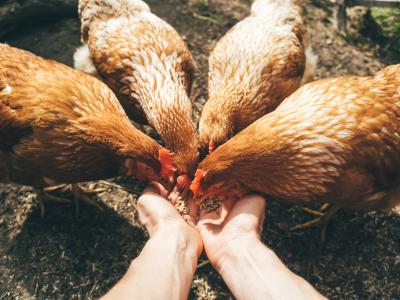Vaccine advisors for the Centers for Disease Control and Prevention (CDC) today recommended the next two priority groups—seniors, essential workers, and people with underlying health conditions—to receive the nation's growing supply of COVID-19 vaccine after healthcare workers and residents of long-term care facilities.
The recommendation comes as shipments of the newly authorized Moderna COVID-19 vaccine make their way to states and amid federal projections that there will be enough vaccine to vaccinate 20 million people in December, 30 million in January, and 50 million in February.
In a related development today, the CDC announced that it has accepted the recommendation of its vaccine panel yesterday for emergency use of Moderna's vaccine, clearing the way for immunization with the second vaccine to begin.
Today's priority group update vote passed with 13 yes votes and 1 no vote. The CDC typically accepts the recommendations of its Advisory Committee for Immunization Practices (ACIP). The interim recommendation, spelling out phase 1b and 1c of prioritization, serves as a guide for state and local health departments.
The CDC said that, as of today, 2,838,225 doses of the Pfizer-BioNTech vaccine have been distributed and that 556,208 people have received their first doses.
Essential workers include first responders, teachers
In expanding vaccination beyond the initial targeted groups of healthcare workers and nursing home residents, the ACIP experts said the transition between phases will likely overlap. They said decisions to move to the next priority levels will be made at the state or local levels, though they have suggested benchmarks for moving to the next phase, such as appointments for vaccination less than 80% booked over several days or a significant increase in vaccine supply.
Phase 1b includes seniors ages 75 and older and frontline essential workers including, for example, those working as first responders, teachers, public transit employees, and grocery store staff. The list also includes people working in food and agriculture, manufacturing, corrections, and the US Postal Service.
Phase 1c includes seniors ages 65 to 74 years old, people ages 16 to 64 with underlying health conditions, and other essential workers such as those working in transportation, food service, finance, and communications positions.
Health departments to make final call
During the group's discussion, Jeff Duchin, MD, a liaison ACIP representative and health officer for Public Health Seattle and King County, Washington, raised a key point that public health departments lack funding to step up COVID-19 immunization and face a difficult road ahead. He said the nation now has two "Cadillac vaccines" with "empty gas tanks."
Several ACIP members echoed the discrepancy between massive resources that went into vaccine development and meager support for educating the public and building out immunization programs.
Other issues the group grappled with were whether to add people age 65 and older to the phase 1b group, what underlying health conditions should be prioritized, and how to prioritize other groups, such as homeless populations.
Nancy Messonnier, MD, who directs the CDC's National Center for Immunization and Respiratory Diseases (NCIRD), said CDC officials are listening to the concerns closely and are learning where they need to be clearer about rationale in their clinical considerations documents, used to guide health departments. CDC officials also emphasized that local considerations may lead jurisdictions to vaccinate some subgroups earlier, such as prisoners and the homeless.
One reason the group held off on including younger seniors in phase 1b is that officials project that the nation will pass through phase 1b relatively quickly, perhaps in a matter of weeks, and that phase 1c needs to be broadly spelled out early to help health departments with their immunization campaign planning. Officials also said they hope to preserve flexibility for local and state health departments and that the CDC will use its clinical considerations documents to provide extra guidance about sub-prioritizing people within the phase 1b and 1c priority groups.
Amanda Cohn, MD, chief medical officer for vaccine policy, preparedness, and global health with the CDC's NCIRD and ACIP's executive secretary, said one of the rationales for putting the underlying health condition group in phase 1c is that officials believe vaccination programs will reach that group easier once vaccine is distributed more broadly to provider offices and pharmacies.
During the public comment part of the meeting, many speakers underscored the demand for the vaccine and hopes that certain groups will be further prioritized, such as seniors from minority communities who live in multigenerational households and those working in sanitation occupations.
Difficult choices in difficult times
Ahead of today's final vote, ACIP's chair Jose Romero, MD, secretary of health for the Arkansas Department of Health, addressed criticism and misinformation about ACIP's work over the past 2 months, especially accusations that targeted ethnic or racial groups for receipt of the vaccine. He added it's important that the public understands the thoughtful and careful discussions that went into painful decisions on how to distribute limited vaccine.
After the vote, Henry Bernstein, DO, with Northwell Cohen Children’s Medical Center, the only member to vote against the recommendation, said the science on morbidity and mortality suggests that the risks are similar for seniors ages 65 to 74 as for seniors 75 and older, which he said should support the inclusion of the younger seniors in the phase 1b groups.
Peter Szilagyi, MD, with the University of California, Los Angeles, said the recommendations follow evidence about risks and ethical principles. "We are trying to thread the needle here," he said, adding that health officials want to see everyone vaccinated. "Now we need the resources."




















